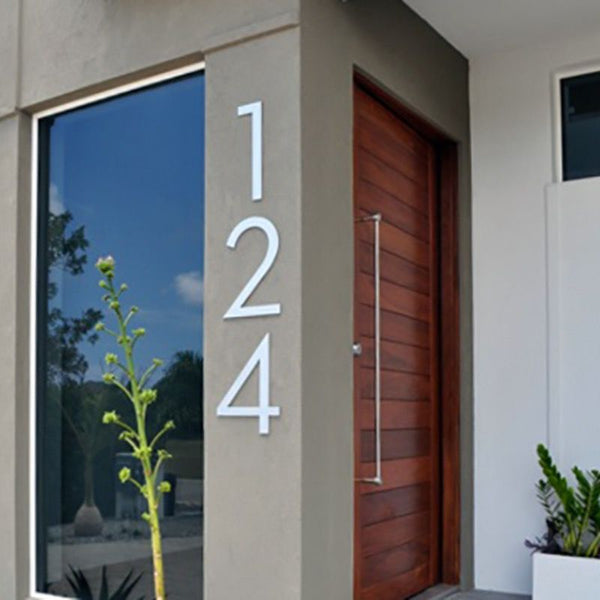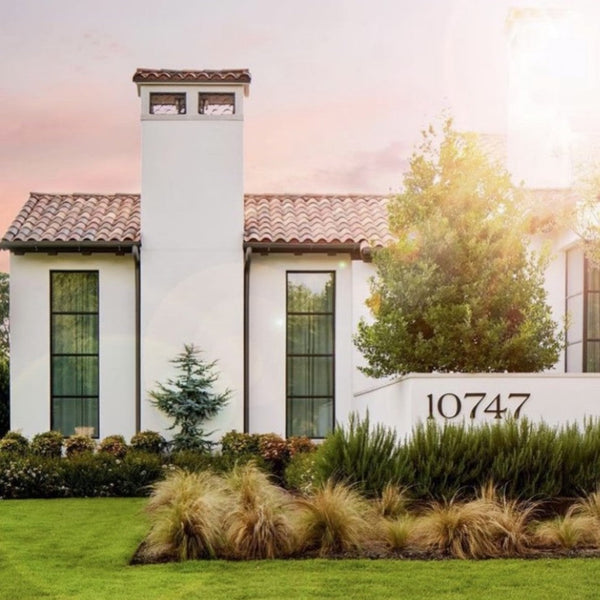
House numbers play a pivotal role, serving as both functional identifiers and subtle aesthetic statements. Properly sized numbers ensure your home is easily located by emergency responders, delivery services, and guests, while also enhancing curb appeal. As homeowners navigate the myriad choices in 2025, selecting the right size for house numbers becomes essential to balance visibility, compliance, and style. To fully understand this balance, a look at how to choose the best house numbers for your home is required.
This blog explores the science and art of choosing the optimal size, delving into viewing distances, regulatory requirements, design factors, and practical solutions for varied property layouts. Proper placement is also critical, and finding the best placement tips should be prioritized.
Navigating Local Building Codes
Before selecting house numbers, it’s imperative to consult local building codes or municipal ordinances, which often dictate minimum size requirements to ensure visibility, particularly for emergency services. Many jurisdictions, such as those following the International Building Code, mandate a minimum height of 4 inches for residential numbers, with some areas requiring 5 or 6 inches for properties set back from the street (SmartSign). For example, Pacific Grove, California, specifies 4 inches for homes within 50 feet of the roadway and 5 inches for those further back (Pacific Grove Code).
To comply, homeowners can contact their local building department, check municipal websites, or consult with contractors familiar with regional standards. Non-compliance may result in fines, as seen in cities like Clearwater, Florida, where visibility regulations are strictly enforced (InterNACHI). Understanding these requirements ensures that your house numbers meet safety standards while avoiding unnecessary costs.

Calculating Size Based on Viewing Distance
The cornerstone of selecting the right size is the viewing distance, the distance from the street’s midpoint to the mounting location of the numbers. A widely accepted guideline in signage design suggests 1 inch of letter height for every 10 feet of viewing distance to achieve optimal readability (Signs.com). This rule, supported by research from institutions like Penn State University, ensures numbers are legible without straining the viewer’s eyes (The Visual Pro).
To apply this guideline:
- Measure the distance from the street’s center to the mounting location (e.g., front door, garage, or mailbox).
- Divide this distance by 10 to estimate the minimum height in inches. For instance, a house 30 feet from the street requires at least 3-inch numbers.
- Round up or opt for a larger size for enhanced clarity, as many experts recommend a minimum of 4 inches for residential settings (Modern House Numbers).
For example, a home 50 feet from the street would ideally have 5-inch numbers, though 4 inches may suffice in areas with slow traffic. This table provides general recommendations.
| Distance from Street (feet) | Recommended Number Height (inches) | Notes |
|---|---|---|
| Up to 20 | 4 | Minimum for most codes |
| 20–50 | 5 | Common for suburban homes |
| 50–100 | 6 | Suitable for larger setbacks |
| Over 100 | 8 or larger | Consult the local fire department |
This approach ensures numbers are proportionate to the property’s layout, balancing visibility with aesthetic harmony.

Enhancing Visibility Through Design Factors
While size is critical, other design elements significantly influence how easily house numbers are read:
- Font Style: Bold, sans-serif fonts like Helvetica or Arial maximize legibility, as decorative or script fonts can be harder to read from a distance (Accurate Signs). Simple designs reduce visual clutter, ensuring clarity.
- Color Contrast: High contrast between numbers and their background is essential. For instance, white numbers on a dark surface or black numbers on a light surface enhance readability, especially at night (Mailbox Works). Reflective finishes further improve visibility in low-light conditions.
- Placement: Numbers should be positioned at eye level, typically 4–6 feet above ground, and free from obstructions like trees or shrubs. Placement near the front door or garage is ideal, facing the street named in the address (SmartSign).
- Lighting: Nighttime visibility is crucial, particularly for emergency responders. Reflective numbers or external lighting, such as spotlights or solar-powered fixtures, ensure numbers remain legible after dark. Some codes, like California’s, require illumination for new buildings (Willows Code). For homes set far back from the road, a second, larger set of numbers on a post or fence is a practical solution to enhance curb appeal with high-visibility address signs.

By optimizing these factors, homeowners can amplify the effectiveness of their house numbers, ensuring they serve their purpose in all conditions.
Addressing Setback Properties
Homes set back significantly from the street, often over 50 feet, require special consideration to maintain visibility. Larger numbers are one solution; for instance, a house 100 feet from the street may need 8–12 inch numbers to be readable. Alternatively, installing a second set of numbers closer to the street, such as on a mailbox, fence, or post, can bridge the visibility gap.
Some jurisdictions, like Montgomery County, Maryland, mandate 5-inch numbers for single-family homes and suggest reflective numbers on both sides of rural mailboxes (MCFRS). For extreme setbacks, consulting the local fire department can provide tailored guidance, as seen in Pacific Grove, where setbacks over 100 feet require fire chief approval (Pacific Grove Code).
This dual approach, larger numbers on the house and supplementary numbers near the street, ensures accessibility without compromising design.

Leveraging Industry Offerings
Competitor analysis reveals a consensus on prioritizing visibility and compliance. Companies like Mailbox Works emphasize measuring distance to determine size, recommending larger numbers for greater setbacks (Mailbox Works). SmartSign aligns with the International Building Code’s 4-inch minimum, stressing contrast and placement (SmartSign). Brick & Batten highlights the aesthetic role of numbers, advising homeowners to check ordinances to avoid sizing errors (Brick & Batten).
Modern House Numbers stands out by offering a range of sizes (4–15 inches) and fonts, all handcrafted from durable aluminum. Their technical specifications include a viewing distances guide, aligning with the 1-inch-per-10-feet rule, and their products cater to both aesthetic and functional needs. This versatility allows homeowners to select numbers that meet regulatory and visibility requirements while reflecting personal style.
Frequently Asked Questions
What size should house numbers be?
Most pros suggest at least 4 inches tall, but if your house sits back from the street, you might need 5 or even 6 inches to make them easy to spot. Always check your local rules too; some cities have specific size requirements.
How do I figure out the right viewing distance?
Start at the middle of your street and look straight toward where the numbers will go, whether that's your front door, wall, or mailbox. That distance is what matters most when picking a size that can be seen.
Can smaller numbers work if the house is right near the curb?
They can. If your home is just steps from the street, 2 to 3 inches might do the job. Still, 4 inches is a safer bet, as it’s just easier to read without squinting.
What kind of font is easiest to read?
Stick with bold, clean sans-serif fonts like Helvetica or Arial. Skip the fancy stuff; cursive or decorative fonts might look nice up close, but they’re hard to read from a distance.
Does lighting make a difference?
Absolutely. House numbers that are lit up or reflective stand out at night, which is a big deal for emergency crews, delivery drivers, and guests trying to find your place after dark.
What if my house sits way back from the road?
Go bigger, think 6 to 8 inches. Or add a second set of numbers closer to the street, maybe on a mailbox, fence, or post. That way, no one misses your address.

Finding the Perfect House Numbers for Your Home
Choosing the right size for house numbers is a blend of science, compliance, and artistry. By understanding local regulations, calculating size based on viewing distance, and optimizing font, contrast, placement, and lighting, homeowners can ensure their numbers are both functional and visually appealing. For properties with significant setbacks, larger or dual sets of numbers offer practical solutions. Modern House Numbers provides a robust selection of handcrafted options, supported by detailed sizing guides, making it easier to achieve the perfect balance of form and function for any home.



